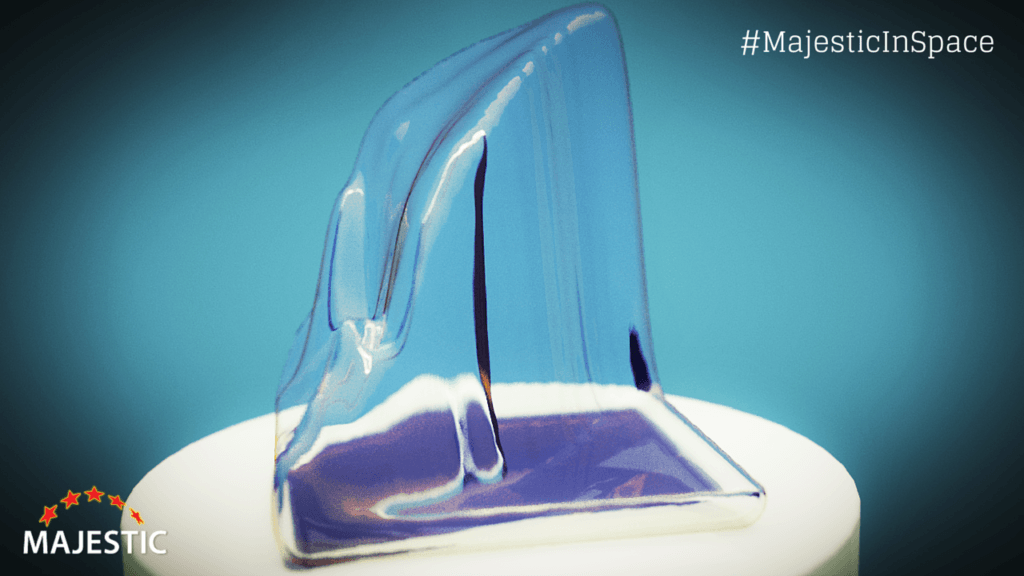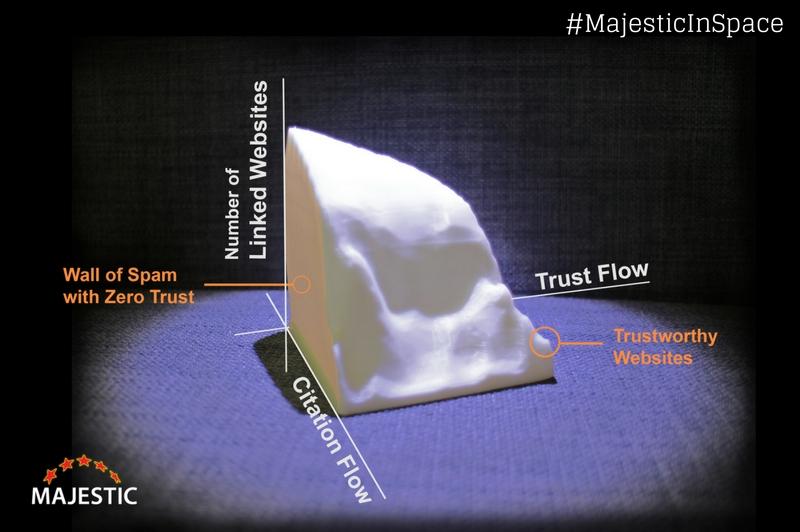 Last year, search engine provider Majestic announced an ambitious goal – they were going to 3D print the Internet. All of it. From space. While the announcement may have raised an eyebrow or two, Majestic was very serious about the project, which they planned to carry out with the help of Made In Space, which sent a new 3D printer to the International Space Station at the same time that Majestic unveiled their project.
Last year, search engine provider Majestic announced an ambitious goal – they were going to 3D print the Internet. All of it. From space. While the announcement may have raised an eyebrow or two, Majestic was very serious about the project, which they planned to carry out with the help of Made In Space, which sent a new 3D printer to the International Space Station at the same time that Majestic unveiled their project.
Majestic.com, a winner of a 2016 Queen’s Award for Innovation, isn’t just any search engine – it’s a web crawler that traverses the Internet on a vast scale and rates every website according to how trustworthy it is. Yes, every single website – Majestic has a map of every page and site on the Internet, with each link assigned a mathematical score so that businesses can tell how much influence their sites might have on commercial search engines and consumers in comparison to their competition.
As Dixon Jones, VP of Marketing at Majestic.com, explains in the video below, the data the web crawler gathers can be plotted onto a chart, which ended up looking something like a variegated mountain, with more links creating darker areas.
Majestic began brainstorming ways that they could present their data to the public in a more accessible, visually appealing way than just lists of links. With the help of data artist Brendan Dawes, they came up with the idea of 3D printing the two-dimensional chart – in microgravity, using Made In Space’s Additive Manufacturing Facility (AMF) on the ISS. The “Majestic Landscape” project was in the works for a year and a half as the AMF was readied and sent to the ISS, but on January 25, the sculpture was finally printed, out among the stars.
“The print looks really good,” said Matthew Napoli, VP of In-Space Operations for Made In Space. “It was exciting to be able to print those complex digital features in microgravity and see the great results.”
The 3D printed Internet does indeed look like a mountain, with peaks represented by the most trustworthy websites and, amusingly, a “Wall of Spam” that forms a menacingly sheer cliff face. Majestic’s algorithms determine trustworthiness based on the quantity and quality of links across the web; the websites with the most trustworthy inbound links coming from other websites are determined to be the most trustworthy themselves.
“The #MajesticInSpace Project has been about expanding ideas, expanding knowledge leadership and about believing that data can be more than just numbers on an excel spreadsheet,” Jones said. “I think that it also inspires people within our industry to say we are doing more there is more that we can do in the world to advance humankind. We are thrilled to have been able to partner with the Made in Space team to bring this data to life and help them further their research into in-space manufacturing.”
If I were asked to create a visual representation of the Internet, I think it would look something like a giant messy scribble, or else it would resemble the sinister-looking bulletin boards you see in thrillers, where the serial killer, or the conspiracy theorist, or the obsessed detective has notes and pictures tacked up all over the wall with incomprehensible webs of threads haphazardly connecting them all, interspersed with violent-looking question marks or X’s or names and dates…I watch too much TV. Majestic’s representation, though, is surprisingly simple for all the information it contains. It’s solid, it’s compact, and you can hold it in your hand.
The project also represents one of the first commercial business transactions to be conducted in outer space – and how appropriate that it involved the world wide web, whose name may now have to be modified as it’s literally gone out of this world.
“Working with Majestic has been a great example of the commercial and International cooperation needed to develop the space industry and take humans to the next frontier,” said Napoli. “What we have accomplished with this partnership would not have been possible even a year ago and truly showcases that new technologies have now made space accessible to anyone on earth.”
Discuss in the 3D Printed Internet forum at 3DPB.com.
Subscribe to Our Email Newsletter
Stay up-to-date on all the latest news from the 3D printing industry and receive information and offers from third party vendors.
Print Services
Upload your 3D Models and get them printed quickly and efficiently.
You May Also Like
3D Printing News Briefs, June 11, 2025: Sustainability, Automotive Tooling, & More
We’re starting with sustainability news in today’s 3D Printing News Briefs, as EOS has strengthened its commitment on climate responsibility, and Zestep is making 3D printing filament out of eyewear...
3D Printing 50 Polymer Stand-In Parts for Tokamaks at the PPPL & Elytt Energy
Of all the world’s things, a tokamak is one of the hardest, most complex, expensive and exacting ones to make. These fusion energy devices make plasma, and use magnets to...
3D Printing News Briefs, May 17, 2025: Color-Changing Materials, Humanoid Robot, & More
We’re covering research innovations in today’s 3D Printing News Briefs! First, Penn Engineering developed 3D printed materials that change color under stress, and UC Berkeley researchers created an open source,...
Firehawk Aerospace Partners with JuggerBot 3D, Gets $1.25M from AFWERX for 3D Printed Propellants
Texas-based Firehawk Aerospace, an advanced energetic materials firm that works with aerospace and defense applications, announced a strategic partnership with JuggerBot 3D, an Ohio-based large-format 3D printer manufacturer. Together, the...



































